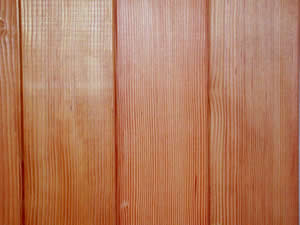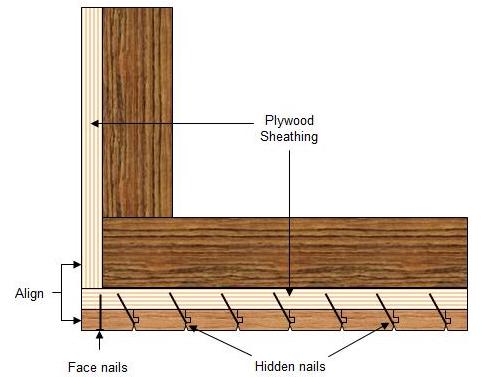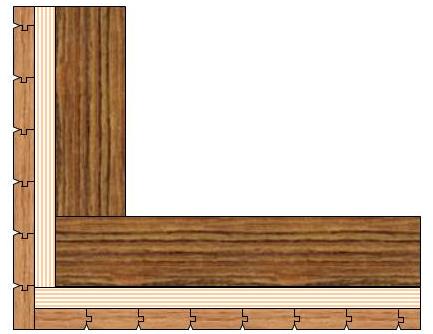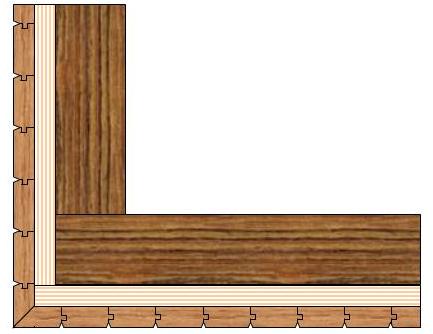
Figure 1 - Vertical tongue-and-groove siding
In horizontal applied siding, the boards are nailed to the studs every 16 inches on center. This is not the case with vertical siding, and hence the requirement for the thicker plywood sheathing.
Start the siding installation at one of the corners of the building. Position the board plumb against and aligned with the plywood sheathing. The bottom of the board should overlap the foundation wall approximately 1/2 inch to provide a drip cap. Check to be sure that the board is perfectly vertical as all other boards will be set based on the correct positioning of the first board.
Start nailing from the top of the board. The nails should be located as close to the groove as possible, as shown in Figure 2. Another row of nails is then driven at the tongue side, which will be hidden from view, as shown in Figure 2.

Figure 2 - Nailing vertical tongue-and-grove siding
Insert the second board into the groove of the first and nail it, this time, however only at the tongue side; the other edge is held secure by the groove, as shown in Figure 2.
To fit over an opening, allow a 1/4 inch gap between the board and the door or window frame. Leave a gap at the sides, although it may be narrower. Fill all gaps with an appropriate caulk.
Vertical Tongue-and-Grove Siding Corners:
The corner conditions, both exterior and interior, are most easily handled by lapping boards. You will have to cut the board lengthwise, as shown in Figure 3, in order for it to fit.

Figure 3 - Tongue-and-groove vertical siding lapped corner
Exterior corners may also be mitered, as shown in Figure 4, however, a lapping joint generally provides a neater appearance.

